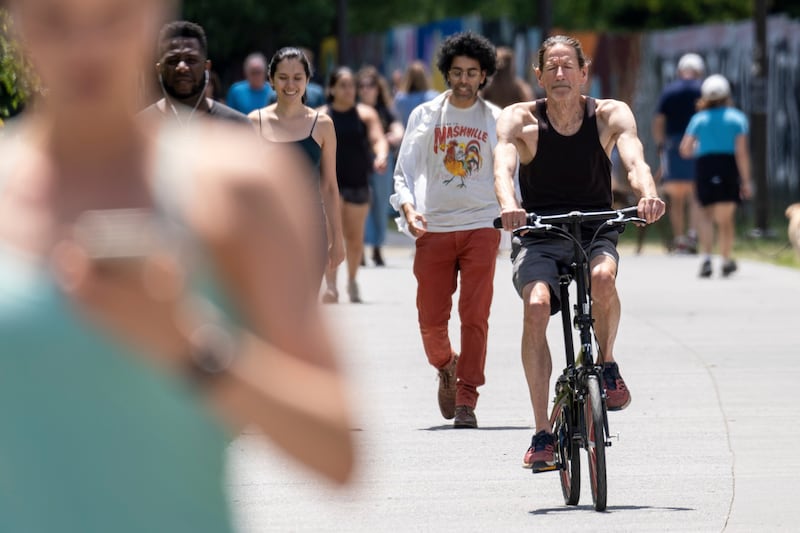I had to chuckle at a CNN story this past Friday morning. The story began by saying “Americans stripped off their masks Thursday as the U.S. Centers for Disease Control and Prevention made the sudden announcement that vaccinated people no longer need to wear them indoors or outdoors.”
CNN hailed the announcement as a moment of liberation: “By Thursday evening many Americans were out on the town or at bars raising their glasses to celebrate the moment.” But the article quickly added that it was also a moment “of trepidation for many as the policy created a whole new set of complex questions for parents, employers, business owners and the millions of Americans who are still hesitant to get shots.”
It is true that the CDC updated its official guidance on Thursday. However, it is extremely unlikely that this decision had much of an impact on anyone’s personal behavior.
One reason is that people aren’t paying that much attention. Only 33% of voters claim to be following news about CDC guidelines very closely. And, in terms of perceptions about the pandemic, there is little difference between the views of those paying attention to the CDC and those who aren’t. This suggests that people are basing their perceptions of the pandemic primarily on sources other than the CDC.
An even more basic reason that the new CDC guidelines won’t have much of an impact is that tens of millions of Americans were already going “out on the town” long before the CDC said it was OK. Over a month ago, my polling showed that 41% of voters had already ignored CDC guidelines by having dinner at an indoor restaurant. When you add in other activities like attending large social events, in-person church, concerts and sports events, 66% of all voters had defied the agency guidelines.
The new CDC declaration didn’t have any impact on those who were already comfortable going out to restaurants and bars. The few who were aware of the CDC decision probably rolled their eyes in amazement and wondered what took the agency so long.
But what about the people who have been obeying the CDC guidelines? Will the new guidelines change their behavior?
It’s unlikely.
As the CNN article notes, for those who are cautious and concerned, the policy change simply raises new questions and more uncertainty. If they go out, how could they be sure everyone else is vaccinated? How could restaurants and bars know the difference? Rather than change their behavior, these people are more likely to wonder if the government health officials have suddenly become too reckless.
In other words, it was their caution that made them comfortable with the CDC guidelines. It was not the CDC guidelines that made them cautious.
The bottom line is that the CDC decision will have hardly any impact on public behavior.
The situation reminds me a bit of the public response to the Arab oil embargo back in the 1970s. In response to long gas lines and serious shortages, Congress mandated a national 55-mile per hour speed limit. States that didn’t comply lost federal funding.
That action was justified by the claim that a 55 mile-per-hour speed limit was best for energy conservation. But, when the energy crisis eased and the gas lines disappeared, the restrictions didn’t end for more than 20 years. A significant number of motorists had become comfortable with the slower driving and resisted any return to normal.
That led to a new rallying cry: “55 Saves Lives.” The Washington Post opined “repeal of the existing limit by Congress, or by any state, would be foolhardy. … Seventeen minutes per 100 miles is not a high price to pay for” saving lives. So, the law remained on the books, but the 55 mile-per-hour limit became the “most violated law in American history.”
We’re starting to see that same dynamic play out in the debate over masks and social distancing. The formal government restrictions will almost certainly last long beyond the public’s interest in obeying them.
And that brings me back to why the CNN story made me chuckle. It had nothing to do with the specifics of masks and other social distancing protocols. It’s the fact that CNN believed the CDC policy change would dramatically impact public behavior.
In reality, government agencies don’t lead, they follow. In this case, the CDC adjusted its views to catch up with the American people. We can expect this scene to play out many times as the years go by. The American people will determine the pace of change and the CDC will try to avoid falling too far behind.


